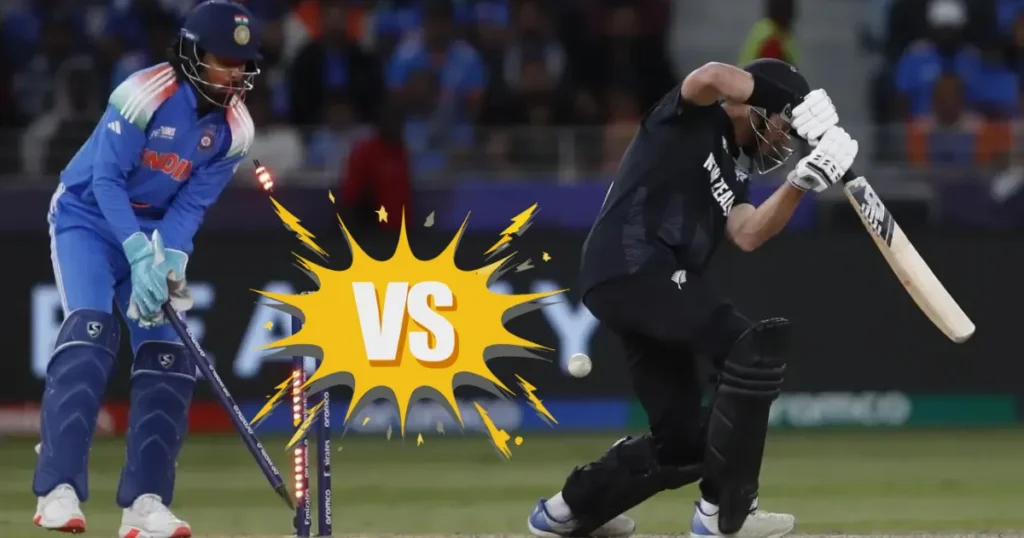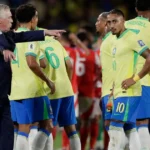Cricket is more than just a sport in India—it’s a passion that unites millions. Across the globe, New Zealand’s cricket team, fondly called the Black Caps, has earned a reputation for being a tough and resilient opponent. The rivalry between the India National Cricket Team vs New Zealand National Cricket Team is one of the most exciting in international cricket, filled with thrilling matches, unforgettable moments, and a competitive spirit that keeps fans on the edge of their seats.
In this article, we’ll take a deep dive into the timeline of their encounters, exploring key matches, milestones, and the evolution of this captivating rivalry. Whether you’re a die-hard cricket fan or new to the game, this easy-to-read guide will walk you through the India National Cricket Team vs New Zealand National Cricket Team Timeline in a way that’s engaging and simple to follow.
Early Days: The 1950s and 1960s
The cricketing journey between India and New Zealand began in the 1950s, a time when both teams were finding their footing in international cricket. Their first Test series took place in 1955–56 in India, marking the start of a competitive relationship. India, playing at home, had the upper hand, thanks to their strong batting lineup and spin-heavy bowling attack, which suited the subcontinental conditions.
In 1956, India secured their first Test series win against New Zealand, a significant milestone as it showcased their growing prowess in Test cricket. The series was a 2–0 victory for India, with spinners like Subhash Gupte and Vinoo Mankad dominating the Black Caps. New Zealand, still a relatively young Test-playing nation, struggled to adapt to India’s spin-friendly pitches but showed glimpses of their potential with players like Bert Sutcliffe.
|
Year |
Format |
Result |
Key Highlight |
|---|---|---|---|
| 1955–56 |
Test |
India won 2–0 |
India’s spinners, Subhash Gupte and Vinoo Mankad, outclassed New Zealand. |
The 1960s saw more Test encounters, with the 1967–68 series in New Zealand being a notable one. India, led by Mansoor Ali Khan Pataudi, clinched a 3–1 series victory, their first Test series win on New Zealand soil. This series highlighted India’s growing confidence in overseas conditions, with players like Chandu Borde and Erapalli Prasanna shining.
The 1970s: A Mixed Bag
The 1970s brought a mix of results, with both teams showing moments of brilliance. In the 1975 Cricket World Cup, India faced New Zealand in a group-stage match. New Zealand posted a modest total, but India’s batting, led by Sunil Gavaskar’s infamous 36 not out off 174 balls, crumbled, resulting in a 202-run defeat. This match remains one of the most talked-about moments in their early ODI encounters, showcasing India’s struggles in the limited-overs format at the time.
In contrast, India dominated at home in Test cricket. The 1976 Test match in Kanpur saw India set a then-record score of 524 for 9 declared without a single century, a testament to their depth in batting. New Zealand, however, showed resilience in the 1976–77 series in India, with players like Richard Hadlee emerging as key figures. The series ended in a draw, but New Zealand’s ability to hold their own was a sign of their growing strength.
|
Year |
Format |
Result |
Key Highlight |
|---|---|---|---|
| 1975 |
ODI (World Cup) |
New Zealand won by 202 runs |
Gavaskar’s slow 36* off 174 balls became a talking point. |
| 1976 |
Test |
India won (Kanpur) |
India’s record 524/9 without a century. |
The 1980s: New Zealand’s Fightback
The 1980s saw New Zealand gain confidence, especially in Test cricket. The 1988–89 Test series in India was a landmark moment for the Black Caps. They secured their first Test win on Indian soil in 36 years, a monumental achievement led by Richard Hadlee’s fiery bowling and John Wright’s steady batting. This victory broke India’s home dominance and marked New Zealand as a formidable opponent.
In ODIs, India started to find their rhythm. The 1987 World Cup saw India defeat New Zealand in two group-stage matches, with Kapil Dev and Mohammad Azharuddin playing pivotal roles. These wins signaled India’s emergence as a strong ODI side, setting the stage for more competitive clashes.
|
Year |
Format |
Result |
Key Highlight |
|---|---|---|---|
| 1987 |
ODI (World Cup) |
India won both matches |
Kapil Dev’s all-round performance shone. |
| 1988–89 |
Test |
New Zealand won a Test |
First NZ Test win in India after 36 years. |
The 1990s: A Competitive Era
The 1990s were marked by intense battles, with New Zealand holding a slight edge in Tests. The 1990 Test series in New Zealand saw the Black Caps win 1–0, with Martin Crowe’s elegant batting proving too much for India. The 1998 series was another triumph for New Zealand, as they clinched a 1–0 victory at home, with Chris Cairns delivering standout performances.
In ODIs, the 1999 World Cup saw New Zealand defeat India in a group-stage match, with Roger Twose and Chris Cairns starring. However, India bounced back in the 2000 ICC KnockOut Trophy final, where New Zealand won a thrilling match by 4 wickets, thanks to Chris Harris and Geoff Allott’s efforts. This victory gave New Zealand their first and only ICC limited-overs title, a bitter pill for India, who were led by Sourav Ganguly.
|
Year |
Format |
Result |
Key Highlight |
|---|---|---|---|
| 1990 |
Test |
New Zealand won 1–0 |
Martin Crowe’s batting masterclass. |
| 2000 |
ODI (ICC KnockOut) |
New Zealand won final |
NZ’s first ICC title, led by Chris Harris. |
The 2000s: India’s Resurgence
The 2000s marked a turning point for India, with the emergence of players like Sachin Tendulkar, Rahul Dravid, and Anil Kumble. Under Sourav Ganguly’s leadership, India reached the final of the 2000 Champions Trophy, only to lose to New Zealand. However, India bounced back in 2002, sharing the Champions Trophy title with Sri Lanka after rain washed out the final—a tournament where New Zealand didn’t advance.
In Tests, India dominated at home. The 2003–04 series in India ended in a draw, but India’s spinners, Harbhajan Singh and Anil Kumble, kept New Zealand’s batsmen in check. The 2009 series saw India win 1–0, with Gautam Gambhir and VVS Laxman anchoring the batting.
In the 2003 World Cup, India avenged their 1999 loss by defeating New Zealand in a group-stage match, with Zaheer Khan’s fiery bowling and Rahul Dravid’s steady batting leading the way.
|
Year |
Format |
Result |
Key Highlight |
|---|---|---|---|
| 2000 |
ODI (Champions Trophy) |
New Zealand won final |
Sourav Ganguly’s century in vain. |
| 2003 |
ODI (World Cup) |
India won |
Zaheer Khan’s 4 wickets sealed the game. |
| 2009 |
Test |
India won 1–0 |
Gautam Gambhir’s gritty batting. |
The 2010s: A Golden Era for Both Teams
The 2010s were a golden period for both teams, with India becoming a cricketing powerhouse and New Zealand emerging as a consistent performer in ICC events. Under MS Dhoni’s captaincy, India won the 2011 World Cup and the 2013 Champions Trophy, solidifying their dominance in white-ball cricket. New Zealand, led by Brendon McCullum, reached the 2015 World Cup final, showcasing their flair and teamwork.
The 2014 Test series in New Zealand saw a remarkable performance from Brendon McCullum, who scored a triple century (302) in Wellington, the first by a New Zealander in Tests. Despite this, the series ended in a 1–0 win for New Zealand, with India fighting hard but falling short.
The 2019 World Cup semi-final was a heartbreaker for India. New Zealand, led by Kane Williamson, posted 239/8, and India’s chase faltered despite a valiant 77 from Ravindra Jadeja and 50 from MS Dhoni. A run-out of Dhoni by Martin Guptill sealed India’s fate, giving New Zealand a 18-run victory.
In 2020, New Zealand whitewashed India 2–0 in a Test series at home, with Tim Southee and Trent Boult dismantling India’s batting. This was India’s first Test series loss under Virat Kohli’s captaincy.
|
Year |
Format |
Result |
Key Highlight |
|---|---|---|---|
| 2014 |
Test |
New Zealand won 1–0 |
McCullum’s 302 in Wellington. |
| 2019 |
ODI (World Cup) |
New Zealand won semi-final |
Guptill’s run-out of Dhoni crushed India’s hopes. |
| 2020 |
Test |
New Zealand won 2–0 |
Southee and Boult’s fiery bowling. |
The 2020s: India Strikes Back
The 2020s have seen India regain their edge, particularly in white-ball cricket. The 2021 World Test Championship final saw New Zealand defeat India by 8 wickets, with Kyle Jamieson’s 5/31 and Kane Williamson’s steady 52* proving decisive. However, India bounced back in the 2023 World Cup semi-final, defeating New Zealand by 70 runs, with Virat Kohli’s record-breaking 50th ODI century and Mohammed Shami’s 7/57 stealing the show.
The 2024–25 season was a rollercoaster. New Zealand achieved a historic 3–0 Test series whitewash in India, their first series win on Indian soil, led by Matt Henry and Mitchell Santner’s exceptional bowling. However, India turned the tables in the 2025 Champions Trophy. In the group stage, India defeated New Zealand by 44 runs, with Varun Chakaravarthy’s 5/42 earning him Player of the Match. The final on March 9, 2025, saw India chase down 252, led by Rohit Sharma’s 76 and KL Rahul’s unbeaten 34, to win their third Champions Trophy title by 4 wickets.
|
Year |
Format |
Result |
Key Highlight |
|---|---|---|---|
| 2021 |
Test (WTC Final) |
New Zealand won |
Jamieson’s 5/31 and Williamson’s 52*. |
| 2023 |
ODI (World Cup) |
India won semi-final |
Kohli’s 50th ODI century, Shami’s 7/57. |
| 2024 |
Test |
New Zealand won 3–0 |
NZ’s first Test series win in India. |
| 2025 |
ODI (Champions Trophy) |
India won final |
Rohit’s 76, Rahul’s 34* sealed third title. |
Head-to-Head India National Cricket Team vs New Zealand National Cricket Team Timeline
Here’s a quick look at the head-to-head record between India and New Zealand across formats as of March 2025:
|
Format |
Matches Played |
India Wins |
New Zealand Wins |
Tied/No Result |
|---|---|---|---|---|
|
Test |
62 | 22 | 14 |
26 (Draws) |
|
ODI |
119 | 61 | 50 | 8 |
|
T20I |
25 | 13 | 11 | 1 |
In ICC knockout matches, New Zealand leads 3–2, but India’s 2025 Champions Trophy win has narrowed the gap.
Key Players and Moments
-
India’s Heroes: Players like Sachin Tendulkar, MS Dhoni, Virat Kohli, and Rohit Sharma have defined India’s success. Rohit’s leadership in the 2025 Champions Trophy and Kohli’s 2023 World Cup century stand out.
-
New Zealand’s Stars: Kane Williamson’s calm leadership, Brendon McCullum’s aggressive batting, and Tim Southee’s swing bowling have been pivotal. Rachin Ravindra’s Player of the Tournament award in 2025 highlights their new talent.
-
Iconic Moment: The 2019 World Cup semi-final run-out of MS Dhoni remains etched in fans’ memories, as does India’s redemption in the 2023 World Cup semi-final.
Why This Rivalry Matters
The India-New Zealand rivalry is special because it’s a battle of contrasts. India’s star-studded lineup and passionate fanbase meet New Zealand’s gritty, underdog spirit. Whether it’s the spin-friendly pitches of India or the seaming tracks of New Zealand, both teams bring their A-game, making every match a spectacle.
The 2025 Champions Trophy final showed why this rivalry captivates fans. India’s spinners, led by Kuldeep Yadav and Varun Chakaravarthy, outfoxed New Zealand’s batsmen, while Rohit Sharma’s aggressive batting set the tone for the chase. New Zealand fought back with their spinners, Mitchell Santner and Michael Bracewell, but India’s composure under pressure sealed the deal.
What’s Next?
With a packed schedule ahead, including a white-ball series in 2026 (ODIs in Hyderabad, Rajkot, and Indore; T20Is in Nagpur, Ranchi, Guwahati, Vizag, and Trivandrum), the rivalry is set to intensify. Fans can expect more thrilling encounters as India aims to maintain their white-ball dominance, while New Zealand looks to repeat their 2024 Test series heroics.
Conclusion
The India vs. New Zealand cricket timeline is a story of growth, resilience, and unforgettable moments. From India’s spin dominance in the 1950s to New Zealand’s historic Test series win in 2024, and India’s triumphant 2025 Champions Trophy, this rivalry has it all. Whether you’re cheering for the Men in Blue or the Black Caps, one thing is certain: when these two teams clash, cricket wins.
Stay tuned for more epic battles, and let’s keep celebrating the spirit of this incredible sport!






